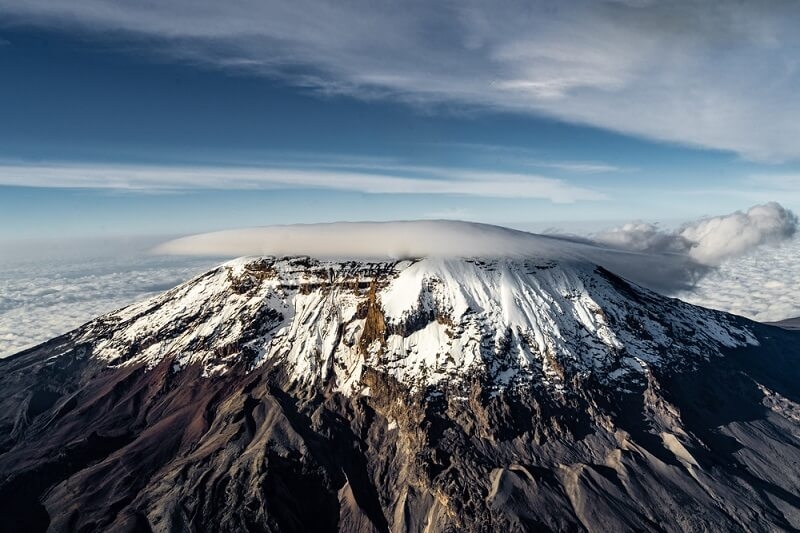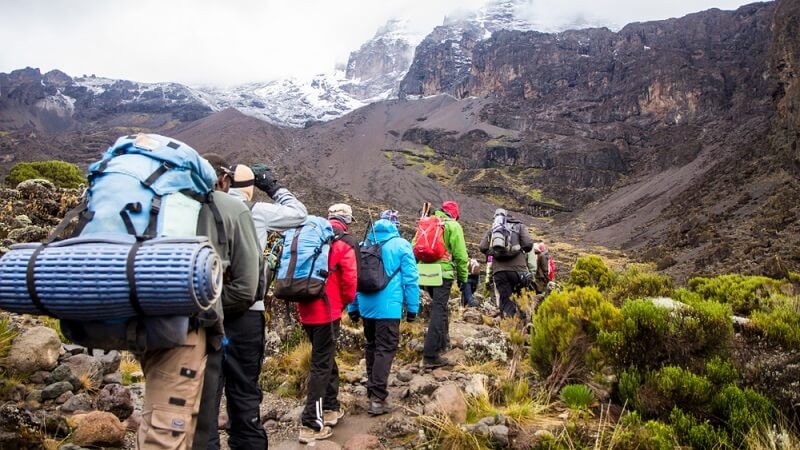
With its glacial summit, stunning scenery, and non-technical ascent, Mount Kilimanjaro is the tallest mountain in Africa and one of the most popular treks in the world. Climbing Kilimanjaro is often a bucket list item for many adventurers, and thousands of climbers attend each year.
Although you don't require mountaineering skills to climb the mountain, it won't be a walk in the park! Many factors, including altitude, physical fitness and endurance, preparation, and gear, will ultimately decide whether or not you will summit. Before you put on your hiking boots and buy a plane ticket, here is everything you need to know!
This complete guide outlines what it's like to climb Mount Kilimanjaro, the various route options, training and preparation tips, gear checklists, and key information about altitude sickness and its prevention. Whether you're an experienced forager or a first-time trekker, this information will help you to prepare for the summit.
Mount Kilimanjaro has been on countless travelers’ bucket lists. It is renowned as one of the Seven Summits and the tallest free-standing mountain in the world at 5,895 meters (19,341 feet).
What is unique about Kili is that it requires no technical climbing skills; with the right guide, preparation, and perseverance, most reasonably fit people can summit Kilimanjaro.
Kilimanjaro is a memorable experience because it allows you to cross multiple ecosystems, from tropical rainforests and alpine deserts to arctic summit glaciers—a perfect blend of nature, adventure, and achievement.
There are many popular routes up Kilimanjaro, each offering a unique experience in scenery, length, difficulty, and success rate. Choosing a path is among the most critical choices in your Kilimanjaro trek guide.
Tip: The longer the route, the more time your body has to adjust to altitude, translating to more chances of summit success.
While the mountain can be climbed year-round, the best conditions are during the dry seasons:
Avoid the long rains (March to May) and short rains (November), as these bring muddy trails and reduced visibility.
Planning your Tanzania adventure travel around the seasons ensures a safer and more enjoyable climb.
Although Kilimanjaro doesn’t require technical climbing skills, you must be physically healthy. You’ll be trekking 5–8 hours daily for up to a week, often at high altitudes with reduced oxygen.
The goal isn’t speed—it’s sustained effort over multiple days. Trekking slowly also helps prevent altitude sickness.
One of the biggest challenges of climbing Mount Kilimanjaro is altitude sickness. Acute Mountain Sickness (AMS) occurs when the body doesn’t adapt quickly enough to decreased oxygen at high elevations.
Tip: Listen to your guide and your body. Ignoring symptoms or pushing too hard can lead to serious complications.
Packing the right gear is critical. The weather on Kilimanjaro is highly variable—from tropical humidity to icy summit winds. Here’s a breakdown of the most essential gear for Kilimanjaro:
Packing smart ensures you're prepared without carrying unnecessary weight.

To climb Kilimanjaro, you must use a licensed guide or tour operator. Choosing the right company is vital for safety, success, and ethical travel.
Some operators offer budget climbs, while others focus on luxury trekking experiences with upgraded camps, private toilets, and chef-prepared meals. You can choose according to your budget and comfort preference.
Climbing Kilimanjaro isn’t cheap, but it doesn’t have to break the bank either. The total cost depends on your route, duration, group size, and comfort level.
Budget and luxury options differ mainly in comfort, group size, and food, but not in the basic trek route.
While most guides focus on fitness, mentally preparing for the challenge is just as important. The trek will test your patience, willpower, and resilience.
But also expect:
Staying positive, flexible, and open-minded will carry you farther than sheer physical strength.
Summit day (or night) is your Kilimanjaro climb's most rewarding and challenging part. Here’s what to expect:
It’s physically and mentally grueling, but the feeling of standing on the Roof of Africa is unforgettable.
Once you descend and return to Moshi or Arusha, take a few days to rest and reflect. Your body will need recovery time, and your mind will want space to process the experience.
Many travelers combine their trek with:
Tanzania adventure travel doesn’t stop with the mountain—it’s just the beginning.
Climbing Mount Kilimanjaro is more than a physical endurance challenge—an enriching experience. With adequate preparation, support, and a determined attitude, you will reach the highest point in Africa and be able to look down at the clouds in satisfaction.
Whether you are a thrill-seeker, personal goal-maker, or just an adventurer looking to return to nature, Kilimanjaro offers something greater than the summit: the experience of self-discovery.
So, lace up your boots, train diligently, pack wisely, and move confidently toward your goal—the Roof of Africa beckons.
This content was created by AI